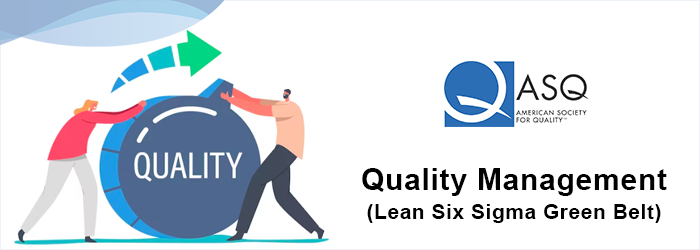

Black Belts in Lean Six Sigma are highly qualified quality improvement specialists who can apply Six Sigma principles to company processes and manage a quality improvement effort. They understand Six Sigma methodology and can effectively lead and take full responsibility for large-scale quality improvement projects. They know how to use six Sigma tools and procedures, as well as conventional concepts. A Six Sigma Black Belt is well-versed in all phases of the D-M-A-I-C (Define, Measure, Analyze, Measure, Control) process and can spot non-value-added elements and activities.
Six Sigma certified experts seek to increase quality by identifying and solving problems and establishing a high-performance organisation. After the Green Belt, the Lean Six Sigma Black Belt is the fifth level of certification. Certified Black Belts should be able to confidently lead a team and delegate responsibilities and roles to team members.
This course will provide you with a comprehensive and deep grasp of Lean Six Sigma, with a focus on defect elimination through process improvement and variation reduction through Six Sigma improvement projects. The course curriculum effectively and comprehensively covers all of the renowned Lean Six Sigma Black Belt subjects. Our intensive training will guide applicants through the Lean Six Sigma Black Belt Certification Exam coursework and prepare them for the tests.
What you’ll learn:
You'll also get:
Lean Six Sigma Black Belt is Recommended For:
Prerequisites for obtaining the Lean Six Sigma Black Belt Certification
Define Phase: The Basics of Six Sigma
Define Phase: The Fundamentals of Six Sigma
Define Phase: Selecting Lean Six Sigma Projects
Define Phase: The Lean Enterprise
Measure Phase: Process Definition
Measure Phase: Six Sigma Statistics
Measure Phase: Measurement System Analysis
Measure Phase: Process Capability
Analyze Phase: Patterns of Variation
Analyze Phase: Inferential Statistics
Analyze Phase: Hypothesis Testing
Analyze Phase: Hypothesis Testing with Normal Data
Analyze Phase: Hypothesis Testing with Non-Normal Data
Improve Phase: Simple Linear Regression
Improve Phase: Multiple Regression Analysis
Improve Phase: Designed Experiments
Improve Phase: Full Factorial Experiments
Improve Phase: Fractional Factorial Experiments
Control Phase: Lean Controls
Control Phase: Statistical Process Control (SPC)
Control Phase: Six Sigma Control Plans